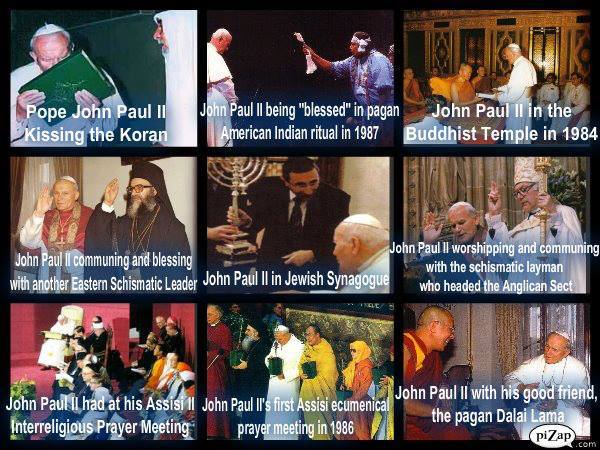Italian journalist Stefania Falasca talks to Catholic newspaper “Avvenire” about the statement given in 2005 for John Paul II’s cause for canonization: “His death is an example”
Cardinal Jorge Mario Bergoglio was among those who okayed John Paul II’s canonization. It was 2005 when the then cardinal and archbishop of Buenos Aires gave his solemn statement as an eye witness at the Roman process for John Paul II’s beatification and canonization cause. Italian journalist, Stefania Falasca, discusses this in an article published by Catholic newspaperAvvenire.
“The diocesan inquiry ordered in 2005, just a few months after Wojtyla’s death, was concluded just two years later, on 2 April 2007,” Falasca said. “Cardinal Jorge Mario Bergoglio, who was 69 at the time, was called by Rome’s diocesan tribunal to give a statement at the start of the process in autumn 2005.”
Here are the memories Bergoglio has of Wojtyla: “I met John Paul II in person in December of the year when Cardinal Martini was nominated Archbishop of Milan. I don’t remember the exact year. On that occasion, I recited the Rosary guided by the Servant of God and I got the distinct impression that he “was praying for real”.
“The second time I met the Pope was between 1986-87 during the second trip he paid to Argentina and the Nuncio wanted me to meet the Servant of God in the Nunciature with a group of Christians of different denominations. I had a brief conversation with the Holy Father and what struck me above all about him this time was the look in his eye. It was the look of a good man.”
The third time the future Pope Francis met with John Paul II was in 1994 when Bergoglio was “auxiliary bishop of Buenos Aires” and was “elected by the Argentinean Bishops’ Conference to take part in the Synod of Bishops on consecrated life, held here in Rome. I had the joy of lunching with him and a group of prelates. I was especially taken with his approachability, his friendliness and his ability to listen to each of his dining companions. In the two subsequent Synods I took part in, I was able to appreciate his great ability to listen to others, even further.”
His eagerness to listen became all the more evident in the personal conversations I had in time with the Servant of God. He didn’t ask any questions, a part from one or two at the end. Above all, he made it patently clear he had no prejudices whatsoever. In this way, he put everyone he came into contact with at ease, gaining their complete trust; at least this is the feeling you got when you spoke to him. Although I am speaking from my own personal experience, I am glad to see that many of my confreres feel the same way. The impression the Servant of God gave, was that even when he didn’t fully agree with what he was being told, he didn’t let on, in order to make the person feel at ease; then, if he had any observations he wanted to make or questions he wished to ask in order to clarify any points, he did so at the end.
There is also one other aspect “that has always struck me about the Holy Father”: “His memory almost had no bounds; he was able to remember places, people and situations he had got to know during his trips, a sign that he paid the utmost attention on every occasion and especially towards the people he met. This to me is a sign of true and great charity. He never usually wasted time but he did dedicated a lot of time to bishops when he received them in meetings for example. I say this from experience because when I was archbishop of Buenos Aires I had a number of personal private meetings with the Servant of God and being a bit shy and reserved myself, I got up to take my leave on at least one occasion having told him what I had come to tell him in a given audience, so as not to waste any more of his time, at least what I perceived to be wasting time. But he took me by the arm and invited me to sit down again, saying: “No! No! No! Stay” so we could continue talking.”
Bergoglio then revealed “one memory I have in particular of the Servant of God, from the time of my visit ad limina with the Argentinean bishops in 2002. One day we concelebrated with the Holy Father and what struck me was the way in which he prepared the celebration. He was kneeling down, praying in the private Chapel and I saw that from time to time he would read something from a piece of paper he had in front of him, put his head in his hands and he was clearly praying for something with great intensity, something I believe was an intention he had written down on that piece of paper; he would then go back and read something else on the piece of paper and pray again and so on and so forth, until he had finished; he then got up to put on his vestments. As confirmation of what I have just said, I can also refer something that the Prefect of the Congregation for Bishops, Cardinal Giovanni Battista Re, told me and that is that when he presented the list of proposals for bishops serving in particularly difficult dioceses with problems, before signing, he would ask to have the list so he could meditate and pray for a while and decide.


No comments:
Post a Comment